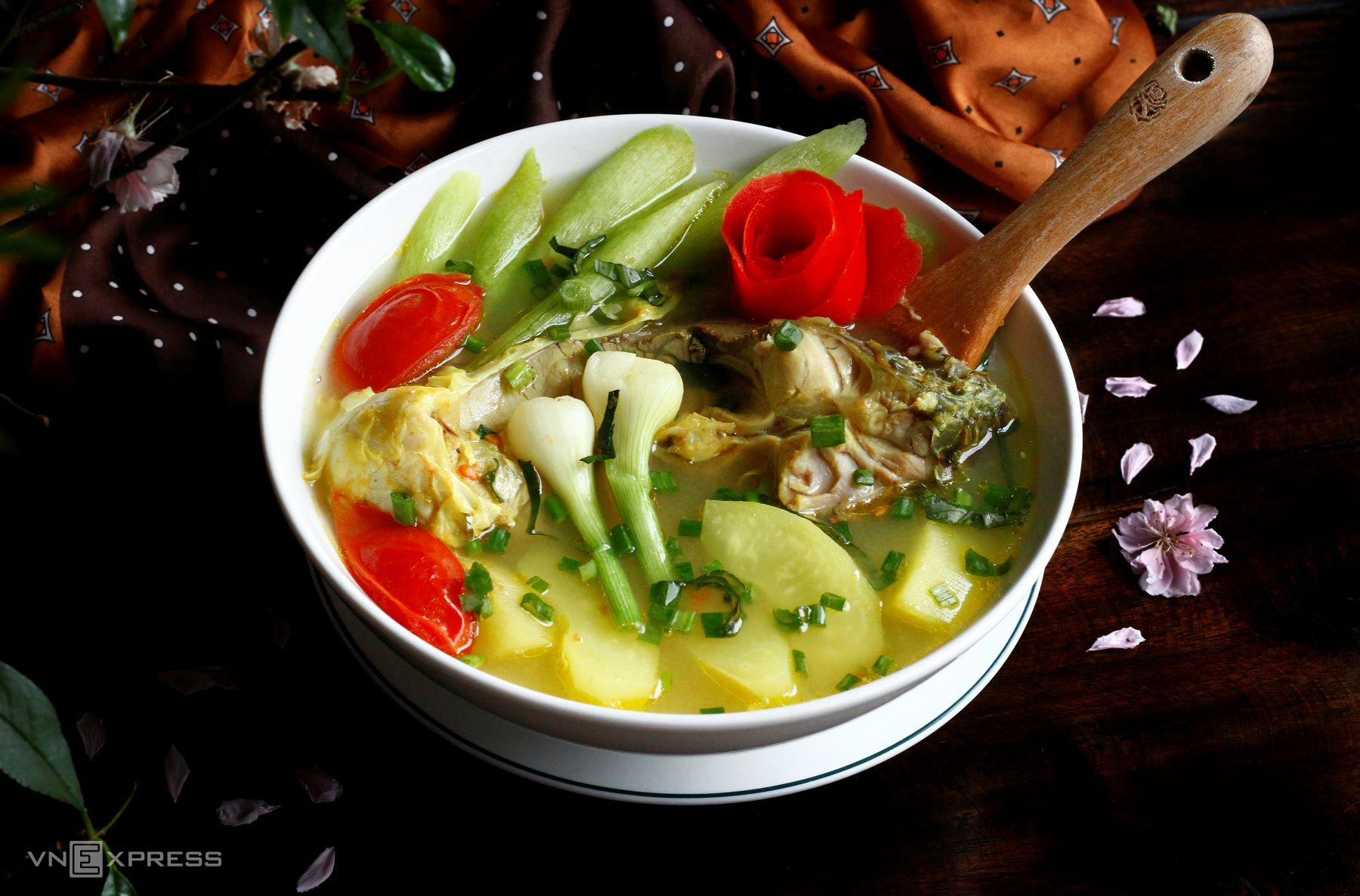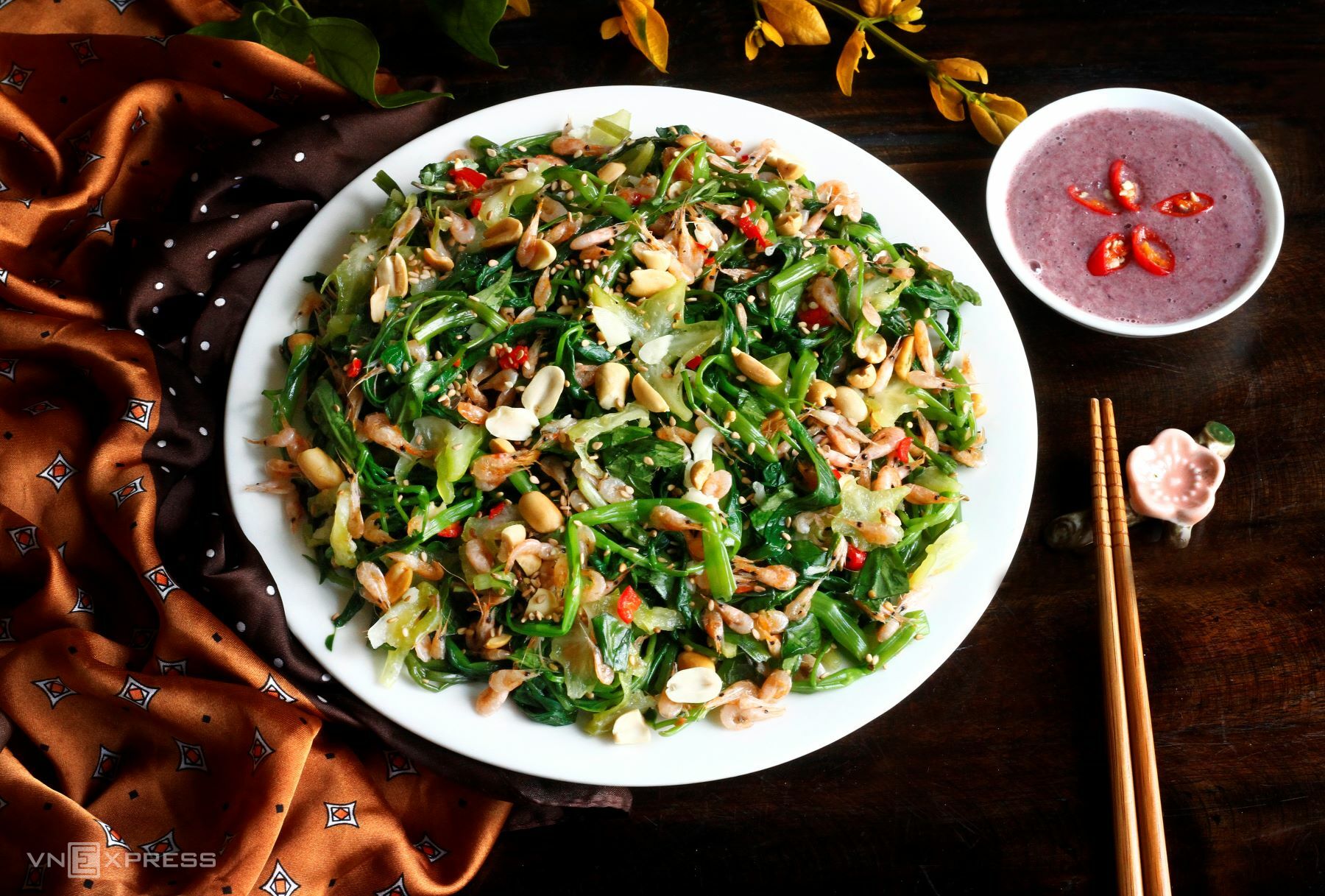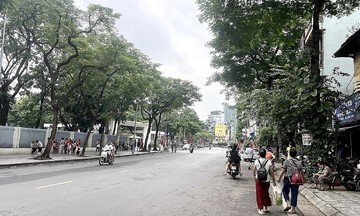Boiled pork belly with pickled vegetables
Tender, succulent boiled pork belly is served with fresh pickled vegetables, pickled daikon radish, and a dipping sauce of whipped shrimp paste with lime, sugar, chili, and sometimes a touch of essential oil of Lethocerus indicus (a type of giant water bug). A splash of slightly sour and sweet fermented rice vinegar broth adds a rich yet refreshing dimension to the dish.
The 1930 cookbook "Am thuc tu tri" (Culinary Wisdom) documents various ways to enjoy boiled meat with pickled vegetables. A simple approach involves dipping the meat in fish sauce and pairing it with lettuce and Vietnamese balm. A more elaborate method incorporates pickled vegetables, pickled daikon radish, pickled scallions, and char siu pork. This dish embodies the refined and elegant essence of Hanoi's cuisine.
Steamed rice cakes with crab broth
Originally a rustic dish born from times of scarcity, steamed rice cakes have been transformed by Hanoians into elegant and refreshing summer treats. Among them, steamed rice cakes with crab broth stand out, featuring rich crab broth poured over soft, white rice cakes.
Authentic Hanoi-style crab broth has a subtly sour flavor from fermented rice vinegar, accented with tomatoes, fragrant shrimp paste, and rich crab fat. When ladled over steamed rice cakes and garnished with crispy pork skin, scallions, and chili paste, it creates a harmonious, cooling, and savory dish. Not only is this dish nutritious, with the cooling properties of freshwater crabs and the easily digestible rice cakes, but it also satisfies the discerning palate.
 |
Braised carp. Photo: Bui Thuy |
Traditional braised carp
Braised carp, a century-old dish, remains a favorite for its balanced flavors, aromas, and appearance. Unlike modern versions that often include fatty pork, the traditional recipe calls for fresh carp simmered in boiling water with fermented rice, turmeric, tomatoes, and papaya for a light sourness. The broth is light and clear, with a naturally sweet umami flavor. This soup is truly "cooling from within," featuring carp, taro stem (both known for their cooling properties), easily digestible papaya, and tangy fermented rice that stimulates the appetite. Hanoians of the past didn't eat soup just to quench their thirst, but to harmonize their internal organs, and braised carp soup exemplifies this belief.
Traditional canh bun (crab noodle soup)
Traditional Hanoi canh bun, also known as bun dua or bun rau, was a common sight in the past, with vendors carrying their noodle pots and broth through the narrow streets. Today, only a few places still serve this dish, such as those on Hoe Nhai, Thanh Ha, Nguyen Sieu, Hang Chieu, and O Quan Chuong streets.
A bowl of refreshing canh bun features thick noodles infused with the sweet flavor of crab, rich crab fat, tender water spinach, crisp water dropwort, golden fried shallots, and spicy chili paste. This simple yet harmonious combination is a delightful summer treat, evoking nostalgic memories for old Hanoians. Traditional Hanoi canh bun retains the natural sweetness of crab and is served with just enough broth to cover the noodles, which are kept warm to absorb the fragrant, sweet, and savory crab flavor.
Crab soup with water dropwort and taro
Crab soup with water dropwort and taro is a traditional Hanoi summer soup. This enticing soup combines tender water spinach, crisp water dropwort, soft and slightly sweet taro, rich crab broth, and a naturally sweet broth.
Freshwater crabs are rich in calcium and have cooling properties. To make the soup, the crabs are hand-ground and carefully strained. The broth is simmered gently so the crab meat forms soft clumps without breaking apart. Water dropwort is added last, stirred gently, and then the heat is turned off to preserve its crispness and aroma.
 |
Water spinach salad with small shrimps. Photo: Bui Thuy |
Water spinach salad with small shrimps
This enticing salad features tender water spinach, flavorful small shrimps, crunchy peanuts and sesame seeds, and a harmonious blend of sour, spicy, salty, and sweet flavors. This simple dish evokes a sense of longing in many Hanoians when they are away from home.
The nearly 100-year-old cookbook "The vi tan bien" (New Compilation of Flavors), published in 1925, outlines two methods for boiling water spinach for salad: boil until just cooked over high heat, spread out to cool slightly, and then squeeze out the water; or boil until just cooked, rinse with cold water, and squeeze thoroughly. Combine the boiled and drained water spinach in a large bowl with marinated star fruit, add a little fish sauce, sugar, salt, and lime juice, and toss gently to combine. After a few minutes, drain the liquid, add small shrimps and herbs, and mix well. Arrange the salad on a plate, sprinkle with the remaining small shrimps, herbs, peanuts, and crushed sesame seeds. Serve with whipped shrimp paste, lime, and sugar.
Bean and pickled mustard green porridge
Bean and pickled mustard green porridge is a famous Hanoi summer snack. Writer Bang Son once remarked, "Hanoi's treats are not meant to fill you up; they are like words of love spoken only halfway, leaving room for imagination." This smooth porridge features blooming rice grains, soft mung beans, savory and fatty tofu with scallions, fragrant scallions, and crunchy, flavorful pickled mustard greens.
The traditional version of this porridge consists of black bean or mung bean porridge served with pickled mustard greens and tofu with scallions. Over time, vendors have catered to younger palates by adding salted egg yolks, char siu pork, cartilage, minced meat, and other ingredients, which detract from the dish's original elegance.
Bui Thuy












